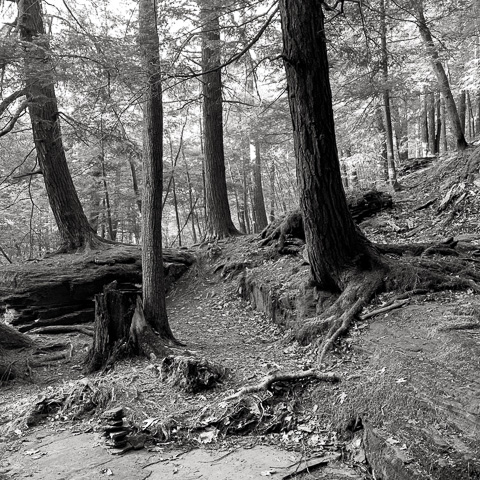
The Forest that Was
One of the themes of this nature walk is change over time. So we asked our bog biologist: If we were walking around this pond during pre-Columbian times, what would be seeing?
Donna Vogler: “We would be in a Chestnut forest, I’m pretty sure of that. Probably every tenth tree would be a Chestnut and they would be massive (two people putting their arms around it as an average size). This one we see here gives you some sense of the scales of these trees. Imagine the whole forest with trees of this size. I’ve seen historical pictures of loggers standing around giant stumps and I couldn't believe they were taken in the Catskills. That must be the Redwoods out west, I thought. But no, the Eastern Woodlands used to have ancient hemlocks that were 12 feet in diameter and 200 feet tall. Enormous! So we’d see big, huge trees. We’d see different plants, too, none of the European invasives. We wouldn’t see as many deer: Native Americans liked to eat them too and knew how to hunt them, and there were wolves in these woods. Post-glaciation, there was evidence of Condors...so depending how far back we visit we might see those. But we'd probably see elk and caribou.
"The soil was different too. There are a variety of European and Asian earthworms that were introduced into the United States and they changed, in particular, the character of woodland soils. Right now about a third of New York’s flora is non-native. Now some of them have naturalized and they’re no longer invasive species, but they wouldn’t have been here before the 15th century.”
Recommended Reading, Charles Mann 1491